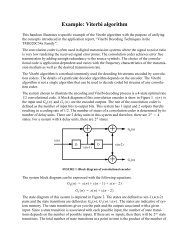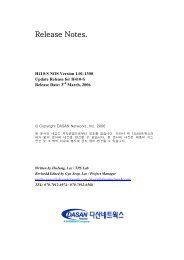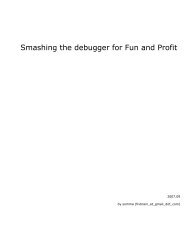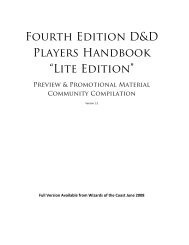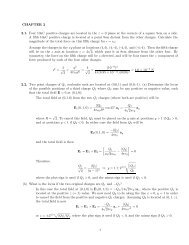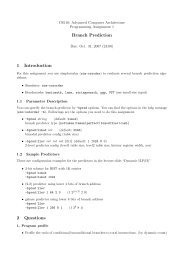"Teaching Smart People How to Learn," by Chris Argyris
"Teaching Smart People How to Learn," by Chris Argyris
"Teaching Smart People How to Learn," by Chris Argyris
- No tags were found...
Create successful ePaper yourself
Turn your PDF publications into a flip-book with our unique Google optimized e-Paper software.
ehavior, people still remain locked in defensive reasoning. Either they remain unawareof this fact, or if they do become aware of it, they blame others.There is, however, reason <strong>to</strong> believe that organizations can break out of this viciouscircle. Despite the strength of defensive reasoning, people genuinely strive <strong>to</strong> producewhat they intend. They value acting competently. Their self-esteem is intimately tied upwith behaving consistently and performing effectively. Companies can use these universalhuman tendencies <strong>to</strong> teach people how <strong>to</strong> reason in a new way—in effect, <strong>to</strong> change themaster programs in their heads and thus reshape their behavior.<strong>People</strong> can be taught how <strong>to</strong> recognize the reasoning they use when they design andimplement their actions. They can begin <strong>to</strong> identify the inconsistencies between theirespoused and actual theories of action. They can face up <strong>to</strong>the fact that they unconsciously design and implement actionsthat they do not intend. Finally, people can learn how<strong>to</strong> identify what individuals and groups do <strong>to</strong> create organizationaldefenses and how these defenses contribute <strong>to</strong> anorganization’s problems.Once companies embark on this learning process, theywill discover that the kind of reasoning necessary <strong>to</strong> reduceand overcome organizational defenses is the same kind of‘‘<strong>to</strong>ugh reasoning’’ that underlies the effective use of ideas in strategy, nance, marketing,manufacturing, and other management disciplines. Any sophisticated strategic analysis,for example, depends on collecting valid data, analyzing it carefully, and constantly testingthe inferences drawn from the data. The <strong>to</strong>ughest tests are reserved for the conclusions.Good strategists make sure that their conclusions can withstand all kinds of critical questioning.So <strong>to</strong>o with productive reasoning about human behavior. The standard of analysis isjust as high. Human resource programs no longer need <strong>to</strong> be based on ‘‘soft’’ reasoningbut should be as analytical and as data-driven as any other management discipline.Of course, that is not the kind of reasoning the consultants used when they encounteredproblems that were embarrassing or threatening. The data they collected was hardlyobjective. The inferences they made rarely became explicit. The conclusions they reachedwere largely self-serving, impossible for others <strong>to</strong> test, and as a result, ‘‘self-sealing,’’impervious <strong>to</strong> change.<strong>How</strong> can an organization begin <strong>to</strong> turn this situation around, <strong>to</strong> teach its membershow <strong>to</strong> reason productively? The rst step is for managers at the <strong>to</strong>p <strong>to</strong> examine criticallyand change their own theories-in-use. Until senior managers become aware of how theyreason defensively and the counterproductive consequences that result, there will be littlereal progress. Any change activity is likely <strong>to</strong> be just a fad.Change has <strong>to</strong> start at the <strong>to</strong>p because otherwise defensive senior managers are likely<strong>to</strong> disown any transformation in reasoning patterns coming from below. If professionalsor middle managers begin <strong>to</strong> change the way they reason and act, such changes are likely<strong>to</strong> appear strange—if not actually dangerous—<strong>to</strong> those at the <strong>to</strong>p. The result is an unstablesituation where senior managers still believe that it is a sign of caring and sensitivity <strong>to</strong><strong>by</strong>pass and cover up difcult issues, while their subordinates see the very same actionsas defensive.The key <strong>to</strong> any educational experience designed <strong>to</strong> teach senior managers how <strong>to</strong>reason productively is <strong>to</strong> connect the program <strong>to</strong> real business problems. The best demonstrationof the usefulness of productive reasoning is for busy managers <strong>to</strong> see how itcan make a direct difference in their own performance and in that of the organization.This will not happen overnight. Managers need plenty of opportunity <strong>to</strong> practice the newskills. But once they grasp the powerful impact that productive reasoning can have onactual performance, they will have a strong incentive <strong>to</strong> reason productively not just in atraining session but in all their work relationships.One simple approach I have used <strong>to</strong> get this process started is <strong>to</strong> have participantsproduce a kind of rudimentary case study. The subject is a real business problem that themanager either wants <strong>to</strong> deal with or has tried unsuccessfully <strong>to</strong> address in the past.Writing the actual case usually takes less than an hour. But then the case becomes thefocal point of an extended analysis.For example, a CEO at a large organizational-development consulting company waspreoccupied with the problems caused <strong>by</strong> the intense competition among the variousUntil senior managers becomeaware of the ways they reasondefensively, any change activityis likely <strong>to</strong> be just a fad.<strong>Teaching</strong> <strong>Smart</strong> <strong>People</strong> <strong>How</strong> <strong>to</strong> <strong>Learn</strong> · ARGYRIS11REFLECTIONS, Volume 4, Number 2



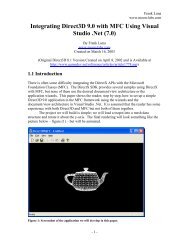
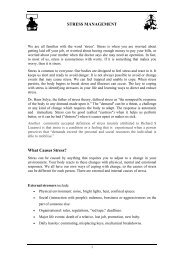
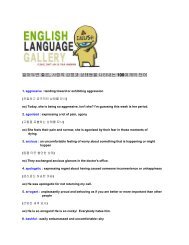
![Finale 2006 - [autumn leaves.MUS]](https://img.yumpu.com/46046993/1/184x260/finale-2006-autumn-leavesmus.jpg?quality=85)

